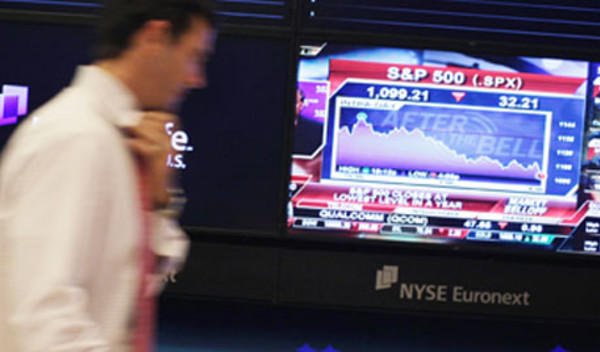

Indices, such as the S&P 500, have been setting new highs on a regular basis.
Fixed income asset classes, from government bonds to global high yield, have also provided strong returns. So have alternative asset classes, such as private equity and property.
So, with everything going up and up, what could happen to a multi-asset portfolio when financial markets experience a bit of a wobble?
Will diversification still add value?
Harry Markowitz said that diversification is the only free lunch in finance.
That is, by combining various different assets which move in different ways, an investor can benefit from the expected return of each asset class, but with lower overall risk (in terms of volatility of the multi-asset portfolio).
The concept relies on less than perfect correlations between the asset classes in the portfolio, meaning they rise and fall at different times, smoothing the overall investment journey for the investor. As correlations between asset classes reduce, the diversification benefit (or size of the free lunch) increases.
However, it has also been said that the only thing that goes up during a crash is correlation.
This hints at the fact that correlations between the different asset classes in a multi-asset portfolio are not static, but change over time and may increase during periods of market stress.
If this were to happen, investors would lose some of the benefit that diversification provides - at the time they need it most.
But is this a problem?
Let’s take two hypothetical, well-diversified multi-asset portfolios which represent different points on the risk spectrum. Broadly speaking, these can be considered to be of ‘conservative’ and ‘balanced’ risk profiles.
If we apply some forward looking assumptions regarding the potential return and volatility of each asset class and then consider how they may be correlated during normal market conditions, we get the following:
Scenario 1 | Volatility | Return | Return – 2 SD | Sharpe ratio |
Conservative MA Portfolio | 4.9% | 3.6% | -6.2% | 0.29 |
Balanced MA Portfolio | 9.5% | 5.1% | -13.9% | 0.30 |
100% Global Equity | 14.0% | 5.9% | -22.2% | 0.26 |
Source: HSBC Global Asset Management
This table shows that, not only does the inclusion of lower risk asset classes reduce the expected level of volatility, but it also increases the expected risk return trade-off (size of the free lunch) of the multi-asset portfolios, illustrated by higher Sharpe ratios compared to equities on their own.
Let’s now consider a scenario of rising correlations.
We use the same return expectations for each asset class, however, we increase correlations between all asset classes by 0.5 (capped at 1).
Scenario 2 | Volatility | Return | Return – 2 SD | Sharpe ratio |
Conservative MA Portfolio | 6.5% | 3.6% | -9.5% | 0.22 |
Balanced MA Portfolio | 11.0% | 5.1% | -17.0% | 0.26 |
100% Global Equity | 14.0% | 5.9% | -22.2% | 0.26 |
From this we can see that during periods of high correlations across all asset classes in the multi-asset portfolio, there is indeed an increase in the expected level of volatility and downside risk, with no change in the expected return.
However, the table also shows that the two multi-asset portfolios still provide risk reduction benefits over a 100 per cent equity portfolio.
Investors would, therefore, still receive some downside risk protection when compared to an equity portfolio.
However, returns of the multi-asset portfolios have not increased - it looks as though investors will lose their free lunch.
So have we found proof that “the only thing that goes up during a crash is correlation”?
Let’s look at weekly data for: MSCI ACWI (global equity), EPRA NAREIT (property), Iboxx Sterling Corporate Bonds and Citi World Government Bond index.
Correlations for the 10 years covering July 2007 to July 2017 are as follows:
| ACWI | NAREIT | Sterling Corps | WGBI | |
| ACWI | ||||
| NAREIT | 0.87 | |||
| Sterling corps | -0.02 | 0.1 | ||
| WGBI | -0.28 | -0.12 | 0.62 |
We would expect to see these correlations increase if we look at the two-year period covering the global financial crisis from July 2007 to July 2009.
| ACWI | NAREIT | Sterling Corps | WGBI | |
| ACWI | ||||
| NAREIT | 0.91 | |||
| Sterling corps | -0.05 | -0.05 | ||
| WGBI | -0.34 | -0.33 | 0.51 |
While this is true for the relationship between equities and property (0.87 rising to 0.91), it is not the case for the other asset classes, where correlations are actually lower.
It’s important to remember that different periods of market stress have been caused by a wide range of factors.
This could lead to different outcomes, depending on what has caused the market reaction.
Also, while this small group of asset classes does not represent the full range of asset classes available to the multi-asset investor, it does show that not all correlations necessarily go up during periods of market stress.
This is an important consideration for the multi-asset investor.
We saw earlier that increasing the correlations between asset classes would lead to an increase in portfolio volatility.
Also, we earlier stated that as correlations reduce, the diversification benefit increases.
So, maybe the free lunch is still on?
Robert Wakefield is a product specialist, multi-asset at HSBC Global Asset Management



